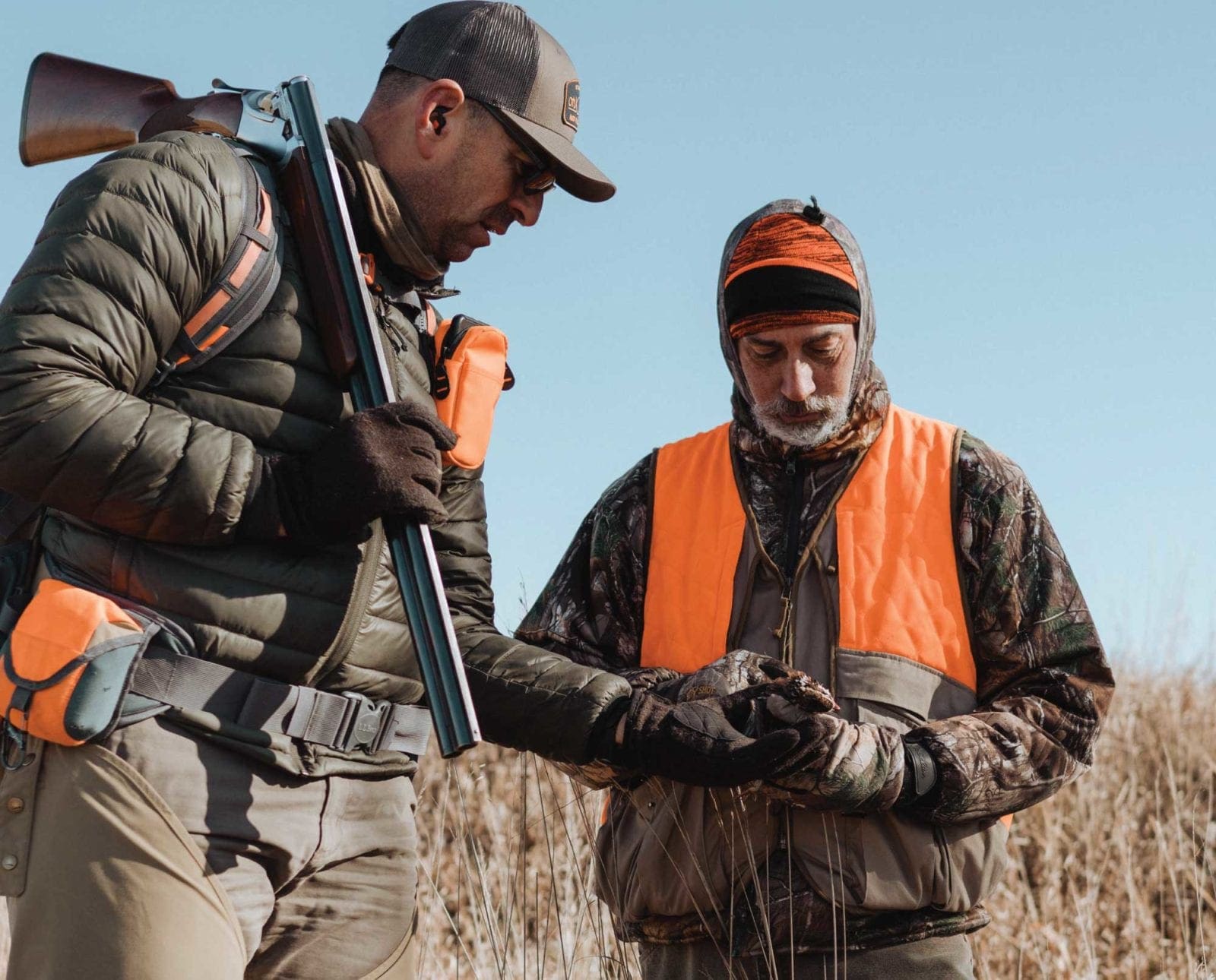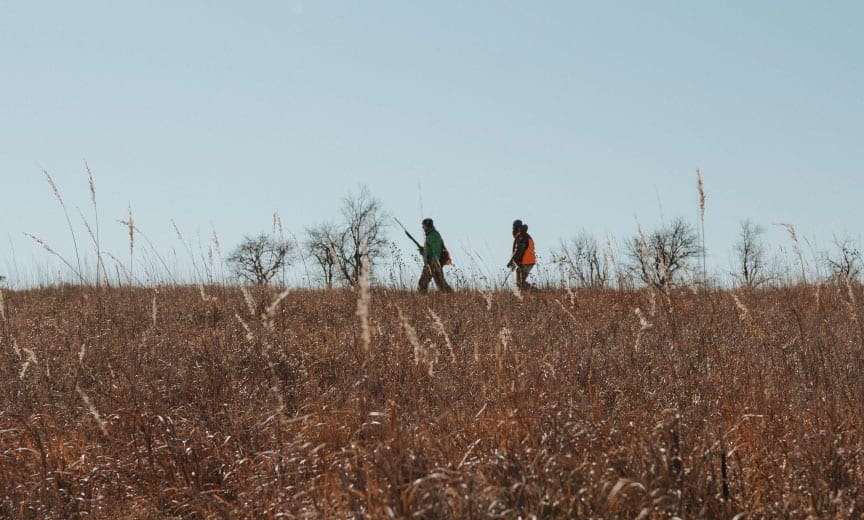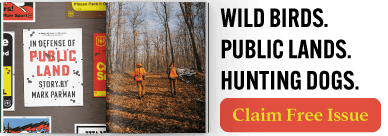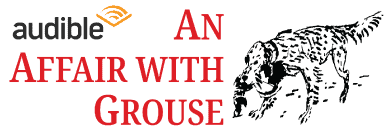Home » Quail Species » Bobwhite Quail Hunting » Hunting Wild Bobwhite Quail on Prairie Grasslands
Hunting Wild Bobwhite Quail on Prairie Grasslands

Edgar Castillo is a recently retired law enforcement officer for…
Wild bobwhite quail can be found on prairie grasslands in abundance.
The typical scenario played out for hunting bobwhite quail in the heartland means following bird dogs down weedy fence rows or brushy draws along crop fields. Quail hunters still trace this path along fence lines with much success as the approach works. If hunters can find the food, bobwhite quail won’t be too far away. Hedgerows, shelter belts, grassy waterways, wooded draws, or along creek banks near corn, soybean, wheat, or milo fields are always good places to locate quail.
But bird hunters need not ignore the native prairies and grasslands, as they offer an alternative to early and late-season opportunities for those that are willing to walk farther. Finding those quail can be a challenge.
Quail are just as likely to be out in the middle of a grassland system or in plum thickets as they are in tree lines along crop rows, thus raising the bar of difficulty and making them harder to find. The challenge for quail hunters is that rather than working “quail-friendly” cover in picture-perfect fence lines along grain fields, you have to walk those larger grass ranges.
When hunting larger grasslands, don’t bypass prairie areas with shorter to mid-level grasses. Because bobwhite quail are small, ground-dwelling upland birds, they require habitat through which they can maneuver. Quail travel in coveys and run across the ground from the shelter of one shrubby patch to another. These sanctuaries offer overhead and canopy cover from avian hunters and elements thrown to them by Mother Nature. These prairie grasslands are able to provide bobwhite quail with the same level of sustainability through food (seeds, berries, and insects) and protection, including places for hiding and loafing as enjoyed by their brethren that reside near agricultural fields in “typical quail country.”
Prairie grasslands can provide a variety of built-in cover needed for nesting, brood rearing, and protection from both harsh weather conditions and predators. As opposed to the “crop field model,” the “grassland model” method of hunting can deal with large expansive areas – places where hunters can miss birds. Native grasses, wildflowers, scattered islands of thickets, brushy draws and low-lying rolling hills can hide quail and provide them with the necessary food supply, cover and safety.
Most hunters are drawn to walk fence rows bordering brushy draws, habitat along tree lines, and both cut and un-harvested grain fields. Chasing quail sometimes calls for the unconventional, as in walking out onto the prairie off the beaten path. What bird hunters need to understand is that quail that are pressured can relocate out into the grasses where they will use briars and thickets for protection from the elements and predators. Thickets are a dense group of bushes or short trees and may consist of things such as blackberry, greenbriar, sumac or plum. Thickets can vary in size and density.

When hunting prairie quail and you’ve located a good area, don’t fall into having trust issues with your dogs. When the dogs get birdy but don’t find anything, slow down and circle back through, approaching it from a different angle. Relocate the dogs and let them work the area methodically into the wind. Birds are likely there or had been there but have moved on in response to the dogs and approaching pressure. Quail do run, not like their larger long-tailed cousins, but they will evade hunters by scurrying off.
If dogs get birdy around thickets and briars, and the birds don’t flush, be prepared to walk through these nearly impenetrable patches. Hunters need to hunt cover thoroughly. Adequate clothing in the form of heavy-duty brush pants and chaps are necessary for your protection against thorns, thistles, and the tangle of branches.
Quail will hold tight in dense cover. When the covey explodes, the quail will flush in a starburst pattern in different directions. Mark where birds fly to, which typically is into the nearest cover. Some birds, using their quick wing-beats will soar into open areas of grass. These marked birds can be worked up as singles. If fewer than four birds are flushed, don’t automatically assume that it’s a small covey; the rest of the covey is likely close by. Singles may be scattered about, especially during feeding times.
When snowflakes start to fall and the landscape receives Mother Nature’s white winter blanket, hunting quail changes a bit. Your concentration should be on finding thermal cover – dense shrub plantings and thickets, downed tree structures, and shelter belts are key to surviving. A good rule of thumb is to hunt no more than 50 yards from shrubby cover.
As always, hunters should be looking for tracks and other signs of quail activity. During cold nights, bobwhite quail will move to thicker cover such as brush piles which offer protection from snow and wind. Quail will gather in a tight circle on the ground, all heads facing outward to detect danger from all directions. By huddling together, quail conserve precious body heat. Signs such as covey droppings and feathers or circular indentations in the snow will indicate quail usage.
SUBSCRIBE to the AUDIO VERSION for FREE : Google | Apple | Spotify
ProjectUpland.com On the Go is brought to us by: ESP – Digital Hearing Protection
Edgar Castillo is a recently retired law enforcement officer for a large Kansas City metropolitan agency. He also served in the United States Marine Corps for twelve years. Edgar longs for the colors of autumn and frosty, winter days so he can explore the landscapes in search of wild birds in wild places. His passion lies in the uplands as he self-documents his travels across public lands throughout Kansas hunting open fields, walking treelines, & bustin’ through plum thickets.



